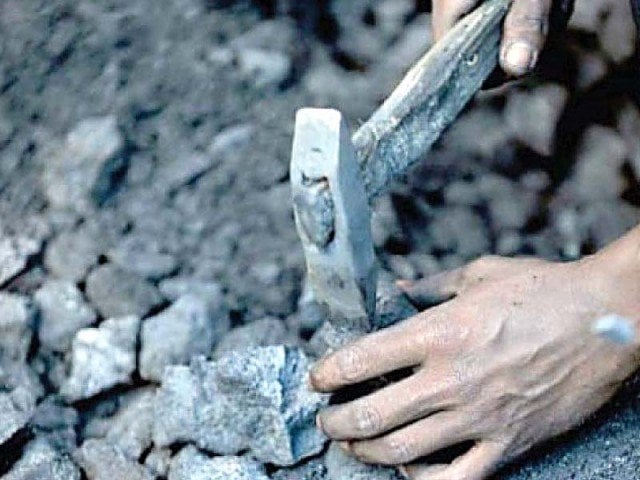
The Sindh Mines and Mineral Development Department has planned to conduct a study mapping different minerals native to the province. Although currently available data suggests that Sindh is home to some 27 known minerals, only eight of them have so far been assessed and estimated. Which is to say, the department is still largely unaware of actual quantities of various mineral deposits found in the province.
This non-availability of data has not only hampered planning and development but also squandered multiple investment opportunities in the mineral sector. Owing to which, the department has finally decided to conduct a proper study, assessing the quality and quantity of all mineral deposits in Sindh.
“We have recommended the provincial government for a comprehensive study in the regard. We will have the required data available within two years after getting approval for the study. After which, we are hopeful that investment opportunities in this sector will also increase,” claimed Mines and Mineral Development Department Director Exploration Gulsher Mangi.
According to the department’s official data, the 27 known mineral deposits in the province include those of Ball Clay, Bentonite, Boxite Clay, Celestine, Chalk, China Clay, Coal, Dolomite, Fire Clay, Flint Stone, Fuller’s Earth, Gravel, Granite, Gypsum, Iron Ore, Lake Salt, Laterite, Lime Stone, Marble, Mouram, Quartzite Stone, Red Ocher, Reti/Bajri, Shale Clay, Sand Gravel, Silica Sand and Trona. In that, the eight estimated deposits include 26 billion tonnes of granite, 60 million tons of Silica Sand, 350 million tons of Marble, eight million tons of Gypsum, eight million tons of Dolomite, five million tons of China Clay, five million tons of Chalk and 0.214 million tons of Celestine.
Where mineral comes from
Jamshoro, Tharparkar and Thatta are counted among the most mineral rich districts of Sindh. District Jamshoro is abundant in various kinds of minerals including Marble, Lime Stone, Coal, Bentonite, Chalk, Celestine, Dolomite, Gravel, Gypsum, Laterite, Mouram, Red Ocher and Shale Clay. Similarly, district Thatta houses huge reserves of Silica Sand, Shale Clay, Red Ocher and Coal among other minerals. While district Tharparkar has the largest reserves of Granite and Coal, besides China Clay and Lake Salt.
Much of Tharparkar’s granite reserves are present in the Karoonjhar Mountains, located in the Nangarparkar area. Owing to which, several companies have been engaged aggressively in drilling and mining the mineral from the region. However, a large mining area is said to be part of the region’s cultural and archeological heritage, housing many ancient mosques and temples. In this regard, Culture Department’s Director Antiquities Manzoor Kanasro said that the Sindh government has recently formed a committee under directives if Sindh High Court to determine area’s historical significance. “There are several ancient religious and cultural places in the area that have historical importance. Some of them even have the potential to be listed among protected world heritage sites,” he asserted.
Tharparkar is also home to the largest reserves of coal. According to Geological Survey of Pakistan, the country has some 185 million tonnes estimated reserves of coal. Out of which, around 175 million tonnes are in district Tharparkar alone.
However, despite existence of large reserves, local production of the coal is still dwarfed by imported coal in the country. Total production of the coal Pakistan was around 5.4 million tonnes till 2018-19. Sindh’s contribution in it was around 1.1 million tonnes. Whereas, according to Hydrocarbon Development Institute of Pakistan’ s Energy Yearbook 2019, the country, during the same period, imported over 156 million tonnes of coal, much of which was consumed by local brick kilns and cement industry, besides power generation.
Published in The Express Tribune, March 1st, 2021.



1719211536-0/BeFunky-collage-(81)1719211536-0-165x106.webp)


















COMMENTS
Comments are moderated and generally will be posted if they are on-topic and not abusive.
For more information, please see our Comments FAQ